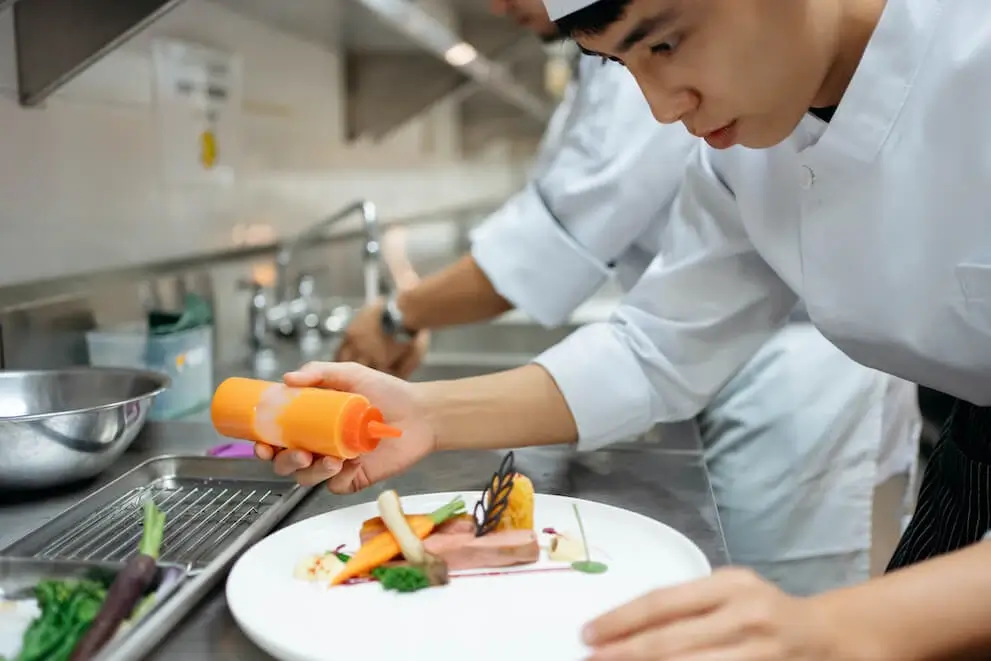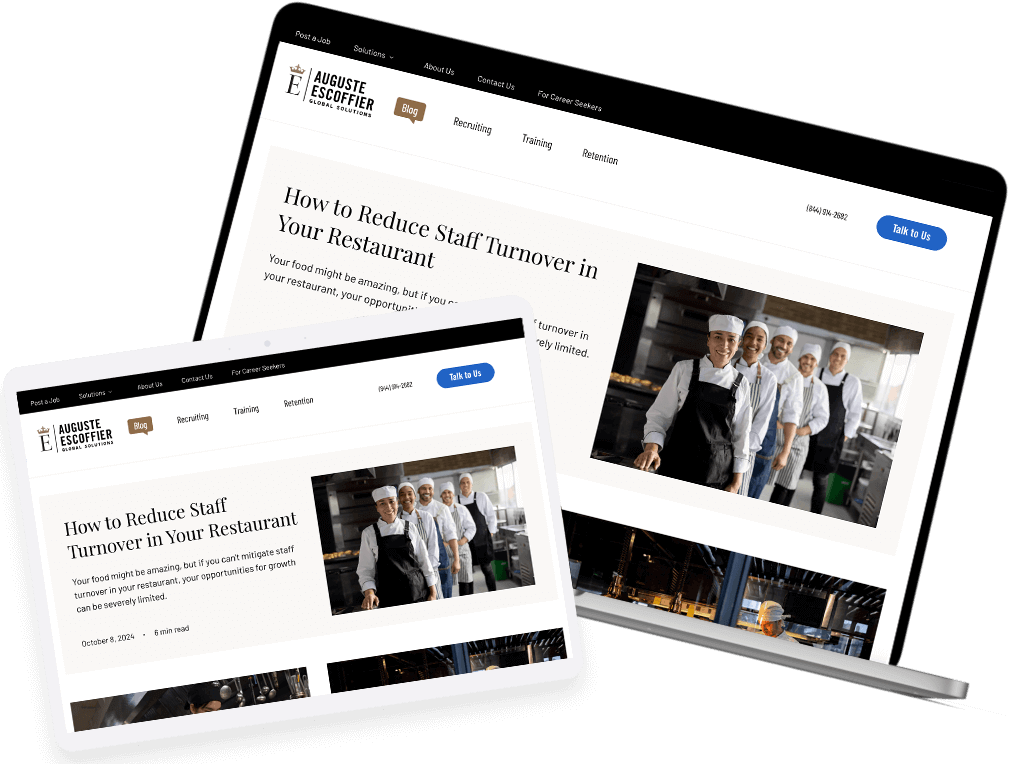
The Future of Culinary Hiring: Why Speed Is the New Competitive Edge
Learn why hiring speed matters in culinary jobs and how tech and training can help restaurants hire faster, retain talent, and stay competitive.
In today’s job market, restaurants face a shrinking window of time to hire qualified candidates. A smaller number of potential employees than openings combined with a labor force that expects and prefers more modern hiring practices means competition is stiff and speed is a difference-maker.
Each day a position stays open can mean lost revenue, heavier workloads for existing staff, and declining morale. Yet screening, scheduling, and interviews often compete with running day-to-day operations, which can make hiring delays even more costly.
In a market where competition for talent is fierce, restaurants that streamline hiring can engage candidates quickly, shorten the time to offer, and keep service running at full strength.
Why Speed Is Now Your Best Hiring Advantage
The National Restaurant Association projects the industry will add 150,000 new jobs each year through 2035, yet many of these openings will compete for the same limited group of applicants. That makes fast, efficient hiring not just preferable but necessary.
Still, the average time to hire in food service is about 2.5 weeks. To stay ahead, operators need to treat speed as a strategic advantage. Technology, process improvements, and proactive talent pipelines can help restaurants hire in days instead of weeks.
Restaurant Operators on the Impact of Understaffing
| Statement | % Who Say Yes |
| Understaffing has a moderate or significant impact on restaurant growth and percent | 90% |
| The impact of understaffing is significant for your full-service restaurant | 60% |
Source: “State of the Restaurant Industry 2024,” National Restaurant Association
Candidates Expect Fast, Mobile-Friendly, Personal Hiring
Today’s candidates expect convenience and quick engagement. If your process lags, they’ll move on to the next opportunity.
According to the American Hotel and Lodging Association, more than half of applicants (53%) use their smartphone to job hunt, and 72% said they would be willing to apply through text message. If your postings and applications aren’t mobile-friendly, you could be invisible to a large portion of the talent pool.
Speed matters after the click, too. Nearly three-quarters (73%) of job seekers will abandon an application if it feels drawn out, and 89% expect to be interviewed within a week of applying.
Meeting these expectations requires both efficient processes and personal touches. Quick responses show that you value a candidate’s time, and human interactions, whether through thoughtful messages or engaging interviews, can help you stand out in a crowded market.
The faster you connected with (applicants), the more likely you were to secure their hire.
How to Use Technology to Speed Up Culinary Hiring
Many restaurant operators have already turned to technology to accelerate hiring, but adoption alone isn’t enough. In 2024, 65% of restaurants added new tools to improve efficiency and address labor challenges, yet only 15% reported meaningful improvements in hiring or retention. The issue often comes down to inconsistent execution: poorly integrated systems, clunky workflows, and impersonal automation can slow things down or turn candidates away.
To see real results, hiring technology needs to be both well-chosen and well-used. That means aligning tools with your process, brand, and candidate experience.
Attract: Bring Candidates In Quickly
Your hiring funnel starts with getting qualified applicants to the door fast. Simple tools like QR codes on receipts, signage, or menus can direct potential candidates straight to your application form. Pair that with mobile-optimized postings and text-to-apply options, and you’re visible where job seekers already are. With the majority of applicants open to applying via text and more than half searching on their phones, meeting them in their preferred format can be critical.
Engage: Keep Momentum After They Show Interest
Once someone applies, the clock starts ticking. Chatbots can answer common questions instantly, even outside business hours, helping keep candidates engaged instead of drifting toward other opportunities. Automated updates via SMS or email—confirming application receipt, sharing next steps, or inviting them to schedule an interview—can maintain momentum and show you value their time.
Evaluate: Identify Top Candidates Fast
Applicant tracking systems (ATS) can serve as the central hub for your hiring process. They collect applications, track progress, and integrate with calendars for interview scheduling. Many also allow posting to multiple job boards at once, which expands reach while reducing admin work. AI-powered screening tools can add another layer of efficiency, scanning résumés for both direct experience and transferable skills, then ranking candidates so managers can focus on the strongest matches first.
More than 80 percent of restaurant operators say that technology gives them a competitive advantage, and we’re seeing that in hiring, By integrating automation and AI-powered tools, restaurants are reducing hiring times, enhancing employee engagement, and fostering a workplace culture that supports long-term retention.
Schedule: Remove Bottlenecks in Interviewing
One of the biggest delays in hiring can be finding time to talk. Automated scheduling platforms give candidates access to real-time availability, letting them book interviews without back-and-forth emails. Some systems send reminders and rescheduling options automatically, which helps avoid no-shows and keeps the process moving.
Speedy Hiring Flow in Action:
QR code scan → chatbot Q&A → mobile application → instant scheduling → interview → offer.
The Right Tech Can Cut Hiring from Weeks to Hours
Southern Rock Restaurants, which operates more than 160 franchise locations nationwide, cut its hiring time from 14 days to less than 24 hours by combining automation with smart filtering tools. The result: faster offers, fewer drop-offs, and a competitive edge in attracting top candidates.
When these tools are used in the right sequence, from initial attraction through scheduling, they can create a hiring process that feels fast and intentional to candidates while reducing administrative drag for your team. But technology alone will not guarantee quality hires. To truly compete, employers need to pair speed with strategies that attract the right people and keep them engaged for the long term.
3 Ways to Speed Up Hiring Without Losing Quality
- Trim the Application Process
Keep it short, mobile-friendly, and clear. Use text or email updates so candidates stay engaged until you make a decision. - Build a Talent Bench in Advance
Tap into alumni, employee referrals, seasonal staff lists, and platforms like EConnect before you have urgent openings. - Screen for Fit as Well as Skills
Use AI or structured interviews to identify candidates who align with your culture and have staying power, not just technical ability.
Grow Your Own Talent for Faster Hiring and Better Retention
In a market where experienced candidates are in short supply, waiting for the “perfect résumé” can slow hiring to a crawl. High-demand culinarians often juggle multiple offers, command higher wages, and can be off the market before you finish your second interview. Instead of joining bidding wars, many employers are turning to internal development—building skills within their own teams to fill roles more quickly.
This approach not only accelerates hiring by moving promising candidates into open positions sooner, but can also improve retention, since employees who grow with you are more likely to stay.
In fact, a 2024 Harvard Business Review Analytic Services survey found that 90% of employers offering tuition assistance benefits say the positive outcomes outweigh the costs, citing improved retention, increased loyalty, and a stronger workforce pipeline. Programs that support employees’ continued education—especially flexible, work-compatible models—can reduce turnover and make restaurant employers more attractive to motivated candidates.
Traditionally, the biggest concern for many leaders is this question: What if we educate this person and they leave? Instead, forward-thinking leaders are asking: What if we don’t educate them and they stay?

Connect With Talent Before They Apply
With EConnect, employers can access Auguste Escoffier School of Culinary Arts students and graduates before they officially enter the job market. These candidates are already gaining culinary and hospitality skills and are actively looking for hands-on experience.
EConnect also helps reinforce your employer brand. It connects you with people who are drawn to career growth, skill development, and companies that invest in their workforce.
Train While They Work
Work & Learn is an employer-sponsored education program that allows team members to work toward a diploma or degree while staying on your payroll. Learning is immediately applicable to their role, meaning you gain value on every shift instead of waiting months for new skills to materialize.
On-Demand Skill Building
ESource gives you access to targeted training videos and coursework that address specific skills you need now. Whether it’s knife work, baking, or management training, you can quickly upskill your team without pulling them away from operations.
With these approaches, employers can create a continuous pipeline of skilled workers ready to step into roles, often faster than external candidates can be found and hired.
Fast Hiring + Ongoing Support = Long-Term Retention
A 2024 longitudinal study found that early-career hospitality professionals tend to lose career commitment over time unless they receive strong organizational support, growth opportunities, family-friendly policies, and mentorship. Filling roles quickly is only the first step. Sustained training and development can turn fast hires into loyal, long-term contributors.
In Culinary Hiring, the Fast Win the Future
In today’s high-pressure hospitality market, the employers who win are those who move quickly and hire with intention. Streamlining your hiring process, developing candidate pipelines before the need is urgent, and investing in employee growth can shift the focus from simply filling today’s shifts to building resilient, high-performing teams.
By pairing efficient recruitment systems with programs like EConnect, Work & Learn, and ESource, restaurants may be able to secure top talent before competitors do, while developing the skills and loyalty that help keep teams strong for the long term. Get in touch with Auguste Escoffier Global Solutions to discover what training tools might be right for your business.
Want to learn more about restaurant industry hiring? Read these next:


